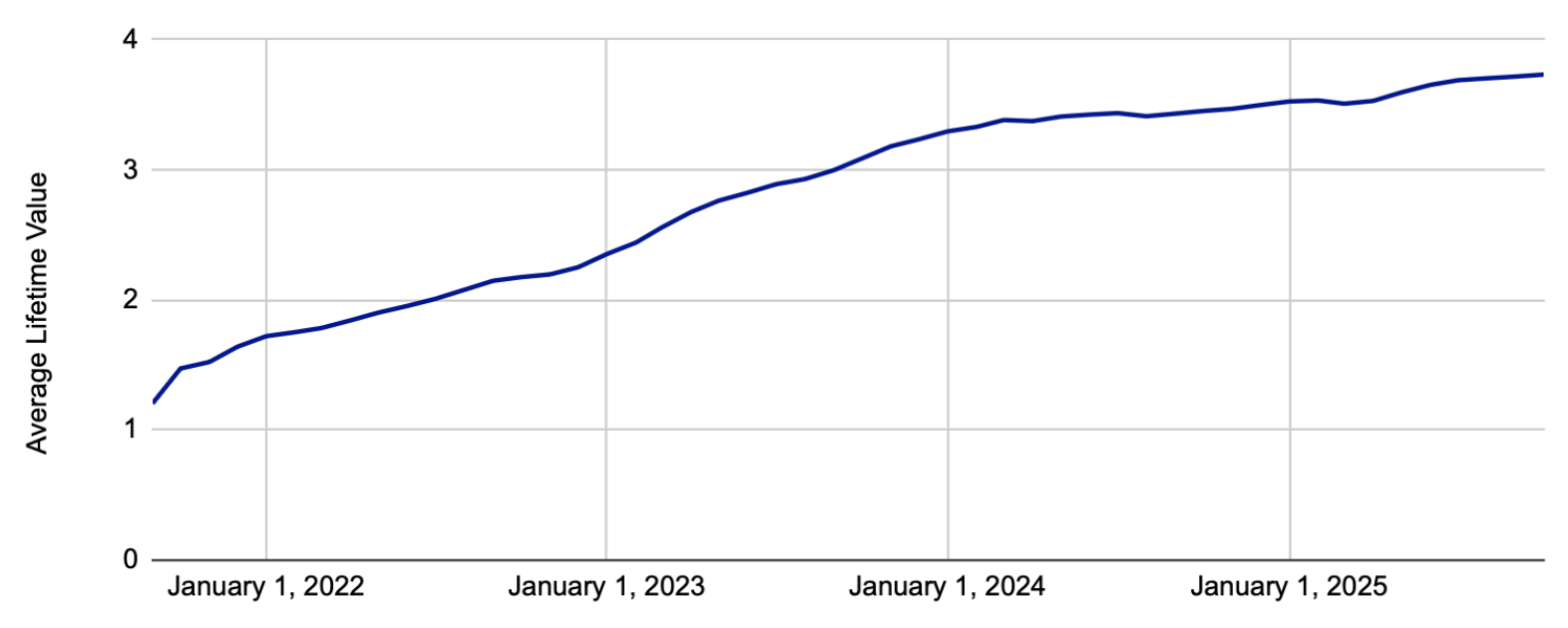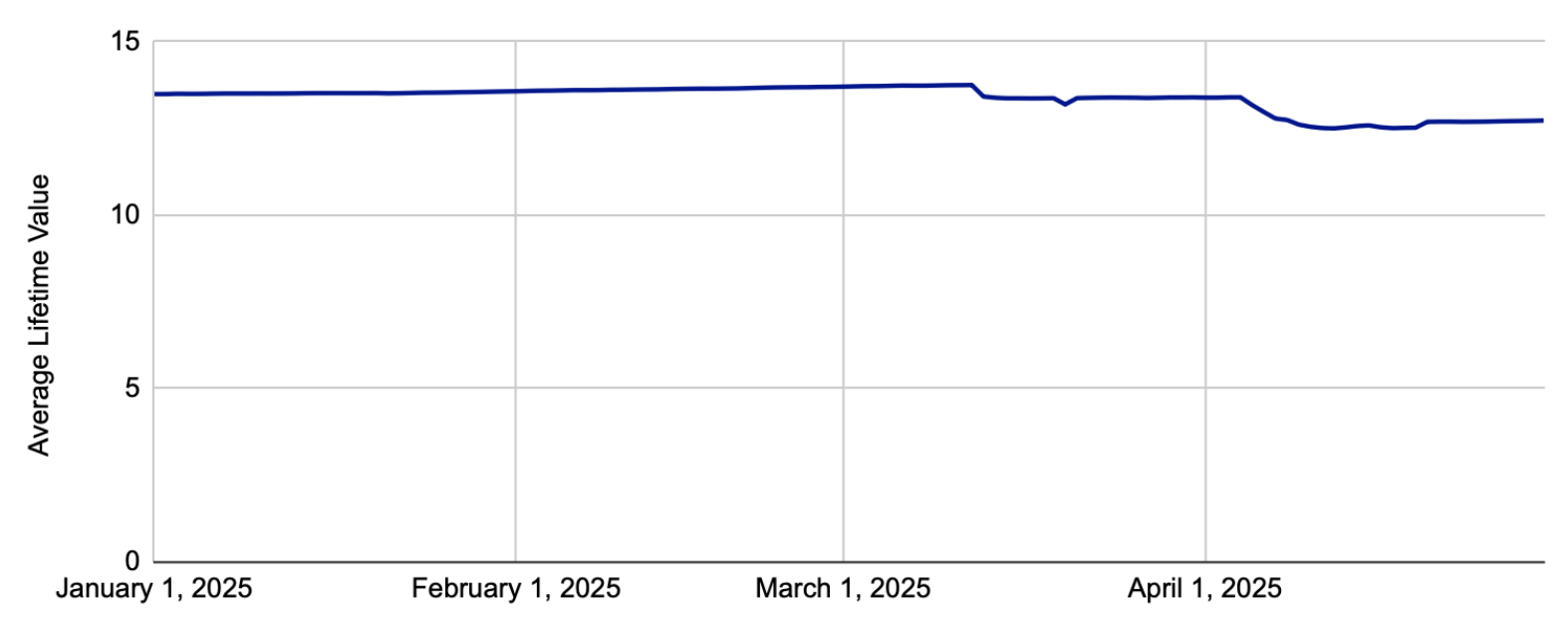How loyal is your podcast audience?
Think about your favourite local restaurant. Your go-to. How many times have you been?
You might not know the exact number, but you could probably figure it out. You could even give this number a name. Maybe you'd call it a "loyalty" score. Or a "repeat customer" score. From the restaurant's perspective, they might think of this as your "lifetime value" and use it to understand how valuable you are as a customer.
The restaurant could then combine your lifetime value with every other diner to understand the "average lifetime value" or “average loyalty” of their entire clientele over time. An increasing number would mean lots of repeat customers, and a declining number would suggest that diners aren’t returning. A useful signal of quality and health.
Over the past few weeks, I've learned that every podcast has an average lifetime value score. And it can be a powerful barometer for audience loyalty.
You just need to know how to calculate it.
Average lifetime value
Put simply, a podcast's lifetime value score measures the average number of distinct calendar days each listener spends with the show. It's a way of taking the entire listening history of a show's audience, and boiling it down to a single number that tracks the show's notional "average" listener over time.
When returning listeners come back for more, the average lifetime value score goes up:
Conversely, when audience members don't return, a podcast's average lifetime value score declines. This can represent churn. Or it can represent a large increase in net new listeners in a short period of time. We sometimes see this during marketing campaigns that drive significant net new listener growth. Sometimes, if enough of those new listeners return in the following days, this dilution is temporary, and the number recovers. Other times, promotions reach a large number of “one and done” listeners who aren’t likely to ever return, and the depression is long-lasting:
There's no single definition of a "good" average lifetime value score. Some podcasts have high scores. Others, low scores. Publishing frequency plays a role in this number: daily shows tend to have higher average lifetime value scores than weekly shows. Time in market is important, too: older shows with deep back catalogs tend to have higher average lifetime scores than newer shows.
Generally speaking, if your show's overall audience size is growing, you should aim for your average lifetime value score to increase, too.
What can podcasters do with an average lifetime value score?
"OK, Dan," you might be thinking to yourself. "One more number to keep track of. What exactly am I supposed to do with this?"
I'm glad you asked. Here are a few ways our team at Bumper uses this score:
To gauge the effectiveness of podcast promotion. New listener growth is not the same as returning listener loyalty. It's remarkably easy to spend money to reach unqualified listeners who sample a podcast once... then never return. If you run a paid promo campaign and your average lifetime value declines and never recovers (or you don't see a corresponding uptick in returning listeners), I'm sorry: you probably bought traffic, not audience. Our team at Bumper has been using average lifetime value to better understand the impact of paid and earned media we arrange for clients.
To avoid the trap of super-serving a declining audience. If your show's average lifetime value is increasing, but your overall audience size is trending downward: be very careful.
To compare shows within a network. Downloads and download-derived "listeners" can't tell you about the loyalty of your audience over time. Why? Because these metrics are tied to unstable, frequently-changing IP addresses. But average lifetime value is tied back to the same stable, long-lived identifiers used to calculate verified listeners, so this metric offers an apple-to-apples comparison of audience loyalty across shows. Smart podcasters invest in shows with demonstrably loyal audiences.
To brag about it to partners and advertisers. As Adam McNeil shared on a recent episode of Podcast Perspectives, "I'm never looking at impressions. Impressions aren't what I'm buying. I'm buying influence." A podcast's average lifetime value score measures loyalty. Shows with loyal audiences typically have influence.
These are just of few of the ways our team at Bumper is using average lifetime value score. I suspect there are more.
How Bumper calculates average lifetime value
Here's the good news: Apple Podcasts Connect and Spotify for Podcasters both provide podcasters with the core metrics needed to manually calculate average lifetime value:
An all-time deduplicated number of unique audience members (user accounts or devices IDs) per show. Spotify for Podcasters calls this "Audience size" and Apple Podcasts Connect calls it "Listeners."
Daily-resolution unique audience member counts
For each platform, sum the daily-resolution unique audience members, then divide that total by the all-time deduplicated number. The result is the average number of "listener days" per unique audience member, AKA average lifetime value.
Of course, average lifetime value changes over time. So to understand historical trends and see how this number responds to editorial decisions, marketing campaigns, and release frequency, you'll need to run this calculation for every single calendar day your show has been in market.
Personally, I find average lifetime value incredibly useful, but manual calculation is a pain in the neck. So we decided to build this average lifetime value score into the Bumper Dashboard, where it's available to all users in our recently-launched Loyalty section:
Remember
Average lifetime value is a powerful way to understand how a show's decisions about editorial, marketing, and release cadence can the loyalty of its audience over time
Average lifetime value goes up when listeners come back for more, and goes down when listeners don't come back
Not all new listeners come back. It's easy to spend money on paid marketing campaigns that deliver short-term spikes in listeners, but fail to deliver long-term value
Generally, podcasters should aim for an ever-increasing average lifetime value score, except when overall audience size is trending down (that's a trap)
Podcasters can calculate this metric by hand, or use the Bumper Dashboard to automatically calculate average lifetime value for both Apple Podcasts and Spotify




